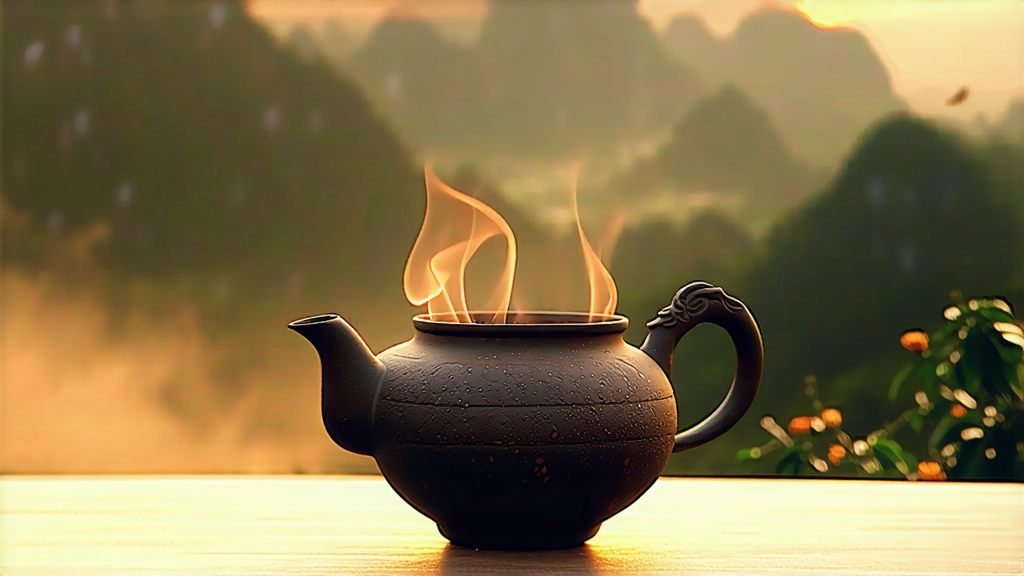
Tucked away in the subtropical hills of southern China, Liu Bao tea has spent four centuries quietly perfecting the art of microbial alchemy. To most Western drinkers “dark tea” begins and ends with ripe Pu-erh, yet Liu Bao is the older, subtler sibling that once fueled the caravans of the legendary Tea Road. Its leaves, coaxed through repeated wet-pile fermentations and years of bamboo-basket aging, develop a flavor that Chinese connoisseurs describe as “betel-nose sweetness with a throat of cooling jade.” This article invites the global tea community to discover why Liu Bao was the first hei cha ever exported from China, how its production differs from other post-fermented teas, and the simple rituals that unlock its medicinal calm.
Historical footprints
The name Liu Bao literally means “six fortresses,” a reference to the six defensive stockades that protected the small trading town of Cangwu in Guangxi province during the Ming dynasty. By 1580 the Qing government had designated Liu Bao as tribute tea, and by the late nineteenth century thousands of piculs (133-pound baskets) were being rafted down the Xun River to the port of Wuzhou, then transshipped to Hong Kong, Singapore and Malaya. Dockworkers noticed that the tea tasted smoother after the monsoon voyage; humidity and heat inside the cargo holds had triggered a second, unintentional fermentation. Merchants began to replicate the journey by storing the tea in bamboo-lined baskets inside humid warehouses, giving birth to the deliberate aging protocols still used today. In 1840 the British East India Company listed “Liu-pu” (an older romanization) alongside Lapsang Souchong in Canton auction catalogues, making it the first hei cha many Europeans ever tasted.
Micro-terroir and leaf style
Guangxi’s climate—year-round 70–85 % relative humidity, red lateritic soil rich in iron oxide, and diurnal mountain fogs—creates an ideal nursery for the yeasts and molds that drive post-fermentation. The cultivar of choice is the medium-leaf Yunnan-Guangxi hybrid Camellia sinensis var. assamica locally called “Da Ye Zhong.” Farmers pick one bud plus the third or fourth leaf, a more mature pluck than green or oolong standards. The extra stem and pectin provide the polysaccharides that Bacillus subtilis and Aspergillus niger later convert into mellow sweetness.
Crafting Liu Bao: from kill-green to “golden flower”
- Sha Qing (kill-green): 10–12 kg of fresh leaves are pan-fired at 280 °C for three minutes to deactivate oxidative enzymes, but the interior moisture is left intentionally high (65 %) to feed future microbes.
- Rolling: A 35-minute light roll bruises the leaf margins without breaking stems, preserving the integrity needed for basket compression.
- Initial sun-dry: Leaves are spread on bamboo mats for six hours, reaching 10 % moisture.
- Dui Wo (wet piling): The signature step. Sun-dried mao cha is sprayed with warm (35 °C) mountain water, piled 70 cm high, and covered with jute sacks. Every three days the pile is turned; temperature is kept below 60 °C to encourage thermophilic bacteria rather than outright composting. After 25–30 days the leaf turns chestnut-brown and develops the earthy “betel” note.
- Re-drying: The pile is broken apart and oven-dried at 80 °C to 12 % moisture.
- Bamboo-basket aging: 50 kg batches are packed into two-foot-tall cylinders lined with fresh bamboo bark. The bark’s natural lactobacilli inoculate the tea and regulate humidity. Warehouses in Wuzhou maintain 28 °C and 80 % RH; fans circulate air to prevent mold pockets. Standard grades age two years, premium marks see five, fifteen, or even thirty years. During this time “golden flowers” (Eurotium cristatum) bloom on the leaf surface, a harmless golden mold prized for digest-aid enzymes.
Grades and tasting lexicon
Liu Bao is classified by leaf age and basket vintage.
- First Grade (Te Ji): brewed liquor is clear russet, aroma of dried longan and camphor, finish like cooling mint.